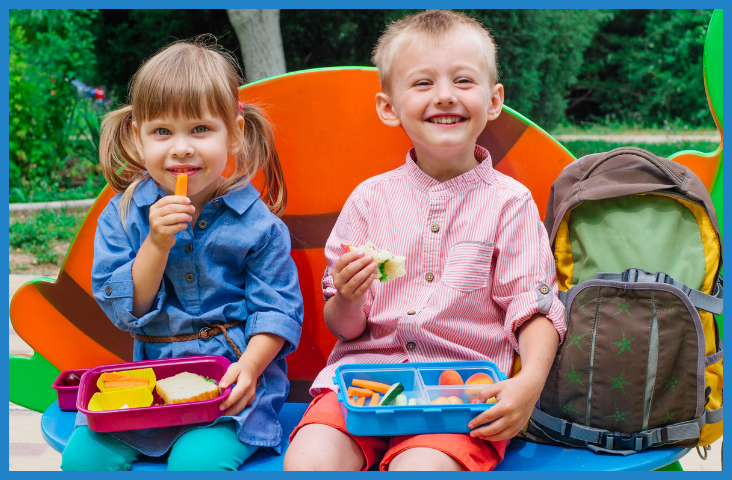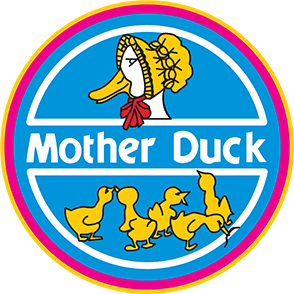
Lunchbox tips to help your kids power through their day
The importance of a healthy lunchbox
A healthy lunchbox will feed your child the right nutrients to help them grow and develop, but it means much more than that. Refuelling your little one at lunchtime gives them energy for play and aids concentration for learning in the later half of the day. It can also help children maintain an even mood, so might even mean a happier and better behaved child when they come home to you. Whether it’s for nursery, or if they are moving on to ‘big school’ next January, follow these tips to build a lunchbox that will fuel your child through an active and fun afternoon.
Follow the food groups
Start by including a variety of foods from the five food groups – that way you know you are providing a mix of essential nutrients for your child’s rapidly growing body. Add in a drink and you’re ready to go. Here’s a quick summary of the food groups with some child-friendly suggestions:
Grain or cereal foods
Young children have very busy bodies and burn up a lot of fuel – starchy grain foods will refuel them for an active afternoon. It doesn’t have to be sandwiches every day; try rolls, pita breads, leftover pasta shapes or cous cous. Crackerbreads or fruit loaf also make great snacks. While very young children don’t need a high-fibre diet, you can gradually introduce wholegrain foods so that children make the transition to the same higher-fibre diet as the rest of the family by the time they reach the age of 5.

Vegetables and legumes/beans
Vegetables contain a wealth of valuable vitamins and minerals – try to include some in your child’s lunchbox every day. Aim for a rainbow of colours during the week, from yellow corn to orange capsicum to green beans. Vegetables can be added into sandwich and pita bread fillings or pasta salads, but they also make a yummy snack on their own. Try cucumber, capsicum or carrot sticks (blanched to soften them for younger children); halved cherry tomatoes; or crunchy snow peas.
Lean meats, poultry, fish, eggs, tofu, nuts and seeds, and legumes/beans
These foods supply much-needed protein for children’s growth, and are rich in other crucial nutrients like iron and zinc. Cold meats, chicken or boiled eggs can fill a sandwich, roll or pitta, or be chopped into finger-food sized pieces.
Lunch can also be a good time to add in fish, which many children struggle to eat enough of. Some types of tinned fish, like salmon or sardines, provide a boost of brain-building omega-3 oils and also make good sandwich fillings. Tinned tuna and chopped cherry tomatoes can be mixed into leftover pasta for a quick pasta salad for older children.
Hummus is a great way to include some plant-based protein, maybe served with chopped vegetables. Other vegetarian protein options include bean salad, dhal and tofu. Nuts are also a good protein source, but shouldn’t be sent in lunchboxes due to nut allergies. Whole nuts are a choking hazard and not suitable for younger children.

Fruit
Fruit is a delicious natural sweet snack for kids. It’s also rich in nutrients, from vitamin C to potassium, and supplies fuel for active bodies. Kid-sized whole fruits, such as plums or small mandarins, are great to include, or put in a container of halved grapes, berries or chopped larger fruit.
Dairy foods and alternatives
Dairy foods are rich in bone-building calcium so important to growing children, plus valuable protein and other nutrients. They can take the form of milk to drink, or cheeses and yogurts. Remember that little people less than 2 years old should have full-fat dairy foods. Once they’re over 2 they can join the family in using reduced-fat dairy foods. If you choose soy or other plant-based milks, cheeses or yogurts, look for full-fat types with added nutrients, particularly calcium.
Tasty treats
We all like to give our children something special in their lunchbox. Try to avoid ‘empty calories’ – foods such as sweet biscuits or cakes that fill kids’ tummies without providing a lot of nutrients. Instead, maximise nutrition by basing treats around the food groups. Sometimes just presenting foods differently can make all the difference. For example, if your child is used to cheese slices cut from a larger block, individual portions such as cheese triangles in foil will seem special. Cut fruit and vegetables into different shapes, like carrot stars, multi-coloured squares of capsicum or melon balls. Celery sticks can be filled with cream cheese and studded with sultanas (my mum called this ‘ants on a log’ when I was a child); and sandwiches can be cut into heart or star shapes, or rolled up and sliced into pinwheels . Foods don’t have to be unhealthy to be special.

Keep it cool with a drink
Water or milk are the best choices for children’s drinks. Freeze a little water in a drink bottle overnight and top it up the next morning for a cool drink that also keeps lunch boxes chilled. Alternatively use a cool pack in an insulated lunchpack to keep food from overheating.
Mix it up
It can be easy to fall into the habit of packing the same sandwich and fruit every day, but including a variety of foods in lunchboxes as you go through the week helps ensure a healthy mix of the nutrients your child needs. As a bonus, it also encourages them to experience a range of tastes at this age when children can become so fussy. Below are suggestions for 3 lunchbox menus that will nourish your little one’s body and sustain their brain. I’m sure you (and your children) can come up with ideas for many more. Enjoy!

Day 1
Tuna and corn sandwich on wholegrain bread
Cubes of cheese or individually wrapped cheese snack portion
Tub of honeydew and watermelon balls
Day 2
Regular or soya cheese and tomato flatbread pinwheels
Capsicum stars and celery moons (just celery sliced into ‘C’ shapes, but the name makes all the difference) with a pot of hummus for dipping
Mandarin
Day 3
Chopped cooked chicken or marinated tofu, halved cherry tomatoes and sugar snap peas in a pasta salad
Tub of dairy or plant-based yogurt
Slice of raisin bread spread with a little cream cheese or non-dairy spread and jam
Apricot
©Fiona Hinton 2021
MEDICAL DISCLAIMER: Please note that this blog is for general information only, and should not be taken as a substitute for qualified medical advice. Please discuss medical issues with your child’s doctor before taking any action.
About Fiona: Fiona Hinton is a dietitian, but describes herself as a nutrition translator, taking the science of nutrition and translating it into foods we love to eat, to nourish both body and soul. She has over 20 years of experience as a dietitian, working in a wide range of areas from hospital wards to running her own private practice. Fiona has a special interest in children’s nutrition. As a mum of three school-age boys, she has first-hand experience of the issues associated with feeding young children, such as weaning and fussiness. Fiona specialises in real-life strategies and practical suggestions to convert nutrition advice into food kids will eat. Fiona has collaborated on several books, including one with best-selling children’s food writer Annabel Karmel, as well as training childcare staff in children’s nutrition.


